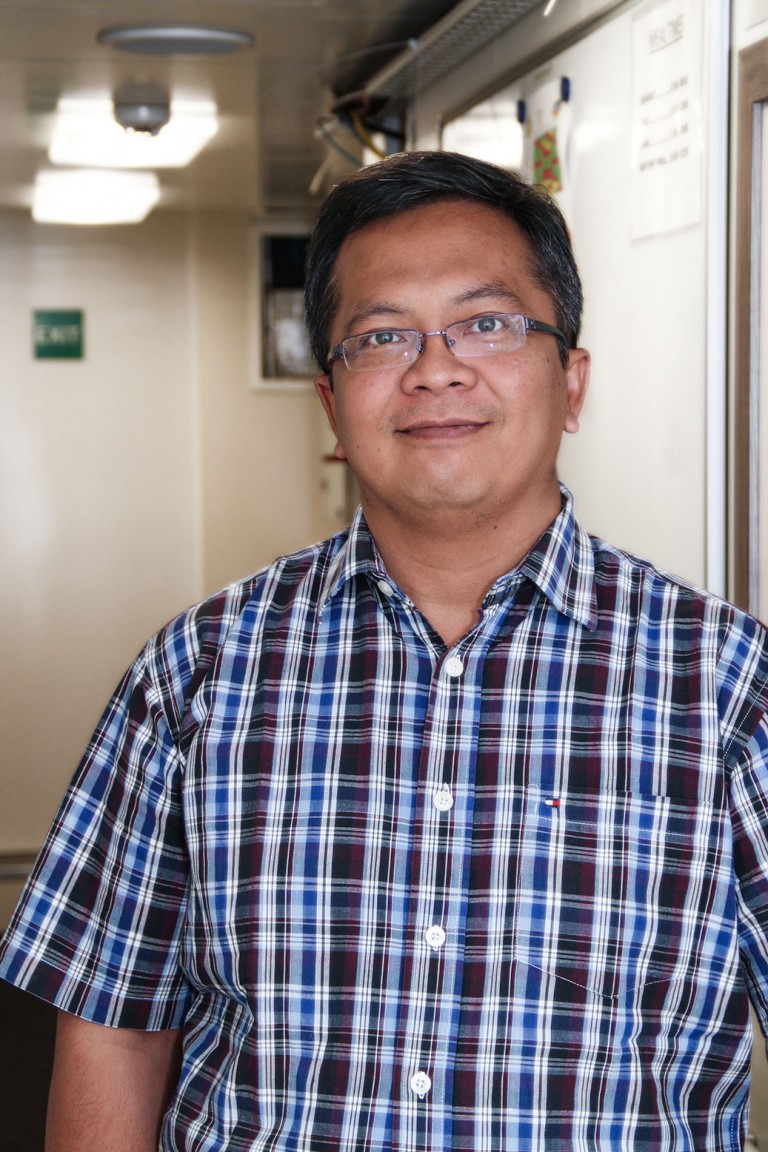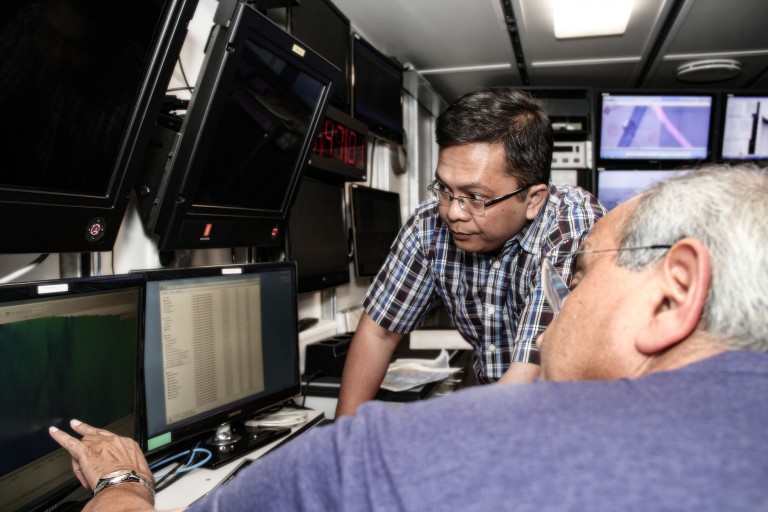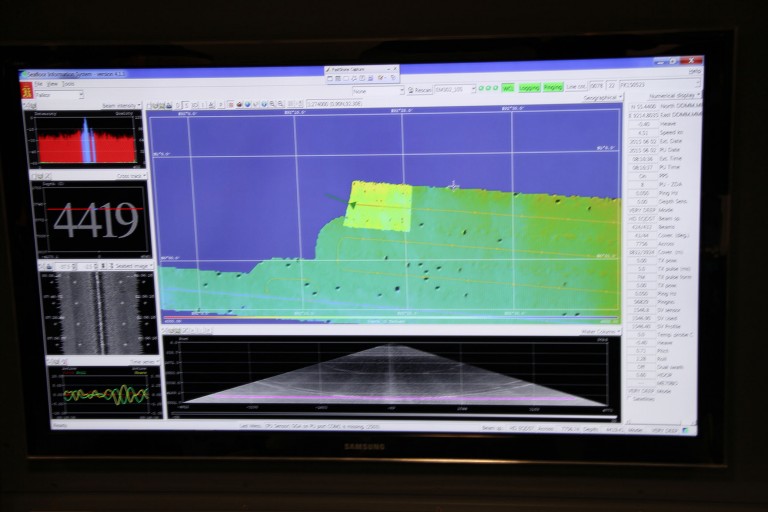
The existence of humanity intrigued him, and that is why Dr. Nugroho Hananto, from the Indonesian Institute of Sciences (LIPI) and co-leader of the MEGATERA expedition, decided to dedicate his life to marine sciences. Hananto knew that life originated in the ocean, but he needed to know more. He was aware of how challenging the study of the ocean could be, but that only fueled his curiosity.
That curiosity took him from the Institut Teknologi Bandung in his native Indonesia to the Institut de Physique du Globe in Paris. Not only did he get his doctoral degree in France, but met Dr. Satish Singh, who would soon become his science partner for many years. The two have collaborated on multiple projects for the past nine years, and today they sail on board of R/V Falkor expecting to unlock the mysteries of the western Sumatran coast.
Dr. Hananto’s country is 70% water, just like earth. In his opinion, getting a deeper knowledge of the oceans surrounding his country, will shape Indonesia’s future. “In our marine environment we not only have fish or oil and gas, but, we also have hazards like earthquakes and tsunamis, we have to study them to make sure that we are able to mitigate those hazards.”

The ocean gives it and takes it away
Life might have come from the ocean, but Dr. Hananto knows first-hand the destructive force that can also originate deep in the sea. He also knows that people prefer to forget painful memories. However, Hananto is determined not to make that mistake. “If you suffer from a trauma, you’ll have a tendency to forget it – we are trying to learn from these histories and certainly not forget them. We need to be prepared for a new earthquake that will eventually happen.”
Dr. Hananto is optimistic about his country’s commitment to disaster mitigation. He refers to the early tsunami warning system that is now in place, but is aware that there is still much that needs to be done. “What we are missing is education and awareness – society should be aware of the potential threats. It is not just the responsibility of the government, but all of society. The research that has already been conducted in this area need to be combined into one set of recommendations, which should be implemented into governmental policies. We must also empower society to learn and to care about disaster mitigation.”
New tools for Indonesia

Dr. Hananto intently scans the screens on R/V Falkor’s visual matrix. Faults begin to take shape in the images acquired through seismic reflection. This is groundbreaking knowledge and he wants to see it applied in his countries disaster-mitigation planning. Dr. Hananto explains as he uses his pen to underline the fine lines that betray the secrets of the ocean subfloor, “The team is looking for the geological structure that caused the big tsunami in 2004. We also want to identify and assess other structures that could possibly cause a strong seismic event.”

